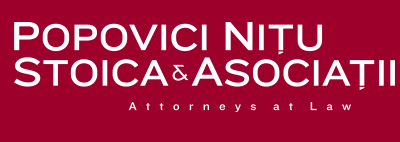- About Us
-
Expertise
- Banking & Finance
- Capital Markets
- Competition & Antitrust
- Corporate & Commercial
- Data Privacy
- Employment & Pensions
- Energy & Natural Resources
- Gambling & Betting
- Healthcare & Pharmaceuticals
- Insurance
- Intellectual Property
- International Arbitration
- Litigation
- Mergers & Acquisitions
- Project Finance/PPP, Concessions & Infrastructure
- Public Procurement
- Real Estate
- Restructuring & Insolvency
- Sports Law
- Tax
- Telecommunications, Media & Technology
- Transports & Logistics
- White Collar Compliance & Defense
- Our team
- Careers
- Publications
- News and Press
- Contact
Articles
The future of vouchers
After two years of public consultations, as well as various rounds of discussions between Member States, new rules on the VAT treatment of vouchers are just about to be born. The amendments to the VAT Directive are expected to be finalized, approved and to enter into force as of January 1, 2015.

In May 2012 the European Commission has put forward a proposal to amend the VAT Directive in order to ensure a harmonized treatment of vouchers across the European Union. Based on information made public at that time, vouchers represented a market of more than € 52 billion/year in the EU, out of which approx. 70% consisted of prepaid telecom, followed by gift vouchers and discount vouchers.
In lack of a definition for vouchers, as well as the existence of different local approaches with respect to the applicable treatment, cross-border supply chains involving vouchers have the potential in resulting either in double taxation or in non-taxation. Hence the need for harmonization.
The current form of the proposal, dated March 2014, departs both from the “means of payment” approach and the existing jurisprudence, re-writing the rules of the game. It is worth mentioning that current definition of vouchers is rather broad and a great variety of instruments used in practice are likely to fall under the new rules (from pre-paid telecom cards and meal tickets to gift cards and multi-journey public transport tickets). Nevertheless, pure discount vouchers are not part of the current proposal.
The proposal differentiates the VAT treatment of vouchers depending on the voucher type: single purpose voucher (SPV) vs. multi-purpose voucher (MPV). In practice, most types of utilized instruments are likely to qualify as SPVs - i.e. vouchers for which both (i) the country where the redeemed goods/services are taxable and (ii) the applicable VAT rate are known at the moment when the voucher is issued.
In a nutshell, while SPVs are seen as a delivery of the underlying goods/services at each step in the distribution chain and the actual redemption is ignored for VAT purposes, MPVs are ignored in the distribution chain and a delivery of goods/supply of services takes place at the moment of redemption. Sounds simple? Well, as always, the devil lies in the details.
While the rules on VAT have been set (although some clarifications and fine-tuning are still needed in certain areas), the interaction of the proposed VAT rules with the accounting registrations and the corporate income tax rules is bound to create uncertainty, confusions and in some cases even a time-limited taxation of overstated profits. Most disruptions would probably occur at the level of the issuer (the person/entity in whose name the voucher is issued) and at the level of the supplier (the person/entity who accepts the voucher as a consideration/ part consideration for goods or services).
In this context, an integrated approach of the legislators would be much needed upon implementation, ideally doubled by practical guidelines.
In the meantime, retail players which issue, distribute or accept such instruments, as well as other interested parties still have some (limited) time available in order to consider the impact of the proposed changes on their business, not only from a fiscal perspective but also from an operational one.
Raluca Rusu, Senior Manager, Popovici Nițu & Asociații TAX
Download Article










